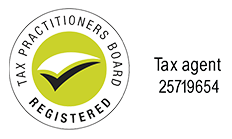How to Invest Profitably in Real Estate
… An Accountants Perspective
Investing in real estate is a big, complex decision to make. The way to do it profitably is to make more right choices than wrong ones. And here is a catch straight away – direct investment in real estate is for the long term and we do not control the future, so it is possible that today’s right decision might be tomorrow’s wrong one.
There are ways of investing in real estate that make money for you, and there are ways that do not…
There are only five financial investments.
1. Cash
2. Real estate
3. Equities (eg, shares)
4. Businesses
5. Collectables, bullion, etc
Over time, and over periods of different market sentiment, the degrees of capital risk and price volatility vary. It is possible to prove statistically that each one of them provides the greatest long-term return on investment simply by carefully selecting the start and end dates of the measurement period. All of which is irrelevant because the market conditions applicable then are not the conditions of today and are unlikely to repeat tomorrow.
Here, we limit our discussion to direct investment in real estate in Australia. We are discussing investment – buying and holding for income and capital growth. We are not discussing buying with the intention of re-selling for profit – that is trading or speculation.
There are ways of investing in real estate that make money for you, and there are ways that do not. To invest profitably in real estate, you must do it right in five ways:
- You must buy well
- You must structure the ownership correctly
- You must borrow correctly
- You must hold for long enough, and
- You must obtain the right advice.
All this and have an eye to the future value and the rentability of the property. In any one situation and for any one person or couple, the perfect combination of these five requirements will be different.
Buy Well
Your eventual profit on the disposal of your investment is locked in when you buy.
In lesson one, day one of Real Estate 101, you are taught there are only three considerations when buying real estate and they are: Location, location and location. That is wrong. There are three more for all real estate purchases: Price, price and price.
When you buy real estate, you are buying either to live in, or you are buying as an investment, to be occupied by somebody else. The two types of purchase are completely different.
The decision to purchase a home to live in has a high emotional content. The purchase of an investment has no emotional content at all, it is purely, 100% analytical; purely location and price. You are not going to live there, so you do not care what the kitchen is like. You only care about the cost of bringing it to rentable condition, the net rent it will earn and its future value.
Structure Correctly
What is the correct structure for purchasing real estate depends upon the specific circumstances of you, the buyer. It needs to be considered quite carefully and the cost of getting it wrong can be very high. The possibilities are:
- Buy in personal names
- Buy in a company
- Buy in a trust
- Buy in a superannuation fund
The choice of which is best is a complex of taxation, asset protection and estate planning. DBA Accountants can guide you on the most effective choice.
Buying in personal names can be done as joint tenants or as tenants in common. The difference is:
- Tenants in common own a fixed percentage interest in a property and can deal separately with their separate interests. Ownership would be expressed as “John Smith as to 50% and Mary Smith as to 50% as tenants in common” – or whatever the percentages were. John and Mary are able to deal with their ownership interests separately from each other.
- Joint tenants, on the other hand, own the property jointly. Ownership is expressed as being “John and Mary Smith” or “John Smith and Mary Smith jointly and severally”. When one joint tenant dies, the remaining joint tenant(s) automatically inherit the interest of the deceased. And any dealing with the property must be carried out jointly.
Buying in a company means that the property belongs to the company, not to the individuals behind of the company. In most situations, the property is safe from the creditors of the individuals. If the property is negatively geared (more later) the tax losses accumulate and carry forward in the company and are of no current benefit to the individuals.
Buying in a trust provides similar security as buying in a company and losses accumulate in the same way. If the trust is a discretionary trust, profits and capital gains are able to be directed to selected beneficiaries – a very valuable tax-planning tool.
Assets, including real estate, are purchased in superannuation funds for two reasons:
- the fund has the money and real estate investment fits the fund’s investment strategy.
- the fund pays less income tax and capital gains tax. The lower rates of tax applicable to super funds mean that borrowing and negative gearing in a super fund is relatively unattractive.
For more on the companies and trusts, please visit the webpage “Thinking About Your Business Structure”.
For more on super funds, please visit the webpage “Thinking About Self-Managed Superannuation”.
But… before taking any action, pick up the phone and chat with one of our friendly team members.
Borrow Correctly
The ideal borrowing structure also requires discussion and advice. The DBA Accountants rule is: Keep It Simple.
For starters, keep your own home loan separate from investment loans. This makes it simple to identify the tax-deductible interest from the non-deductible.
Interest on money borrowed to acquire an income-producing asset will normally be a tax deduction. It does not matter what security is used for the loan, all that matters is the purpose to which the borrowed money is applied.
The loan choices offered to you would probably be principal and interest – where each loan repayment contains an element of interest and an element of principal repayment, so that a set number of payments of a set amount will completely repay the loan over the contracted time. An excellent “forced saving” program.








